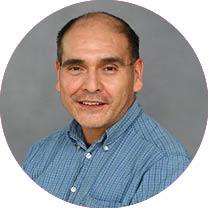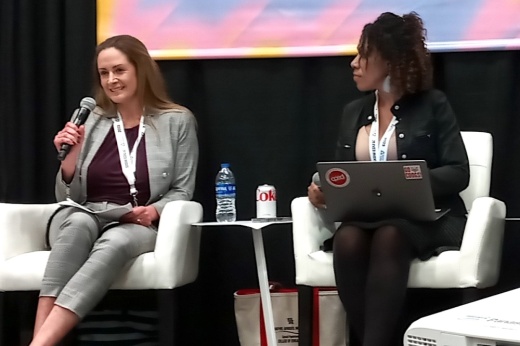Three educators speaking at the South by Southwest Education Conference in Austin said teachers need more resources and support to adapt to rapid changes in education and to better connect with students now and the future.
In a March 8 panel discussion about improving digital inclusion for all students, the speakers said educators suddenly turning to remote instruction with COVID-19’s arrival was initially chaotic, but it also sparked innovation in virtual education.
Veronica Mechler, Northside ISD special education director, said educators naturally should be flexible, but they had to be even more nimble early in the pandemic. Going to virtual instruction also compelled teachers who had not been fond of technology to instead embrace it, Mechler said.
Mechler said teachers, students and many people in general learned to effectively use online meeting platforms such as Zoom, Google Meet and Microsoft Rooms.
“People did what they had to do to take care of kids,” Mechler said.
Lauren Katzman, an associate research professor at Arizona State University and a former special education teacher, said a variety of positives came out of education during the pandemic. For example, students living in the Navajo reservation in Arizona had no access to Wi-Fii and hot spots, but area schools and organizations partnered to bus Navajo students to where they could gain Wi-Fi and hot spot access.
Khechara Bradford, executive officer for specialized instruction and services for Houston ISD, agreed educators capitalized on the latest advancements in education, such as smart boards, but now that schools have returned to in-person classes, there is growing concern that educators and school systems may shy away from education technology.
“We have returned to what we did before, but that may put a lid on change and innovation,” Bradford said.
To that end, the speakers said it is vital for educators and their administrators to vie for available funding and resources to ensure all students have the support they need in the physical classroom and online when needed.
Katzman suggested educators and their administrators take time to better understand available education technology and how best to use them in their campuses and community.
“I think there’s some confusion on the use of technology in education and between equality and equity,” Katzman said. “The question can be: Why can’t we give technology to everyone?”
Bradford said urban school systems such as Houston ISD—Texas’ fourth-biggest school district with more than 194,000 students—still have digital divides that adversely affect students who lack reliable, affordable access to wifi or digital devices at home.
Bradford emphasized the importance of supporting all students holistically, meaning providing resources to keep them prepared for quality learning in and out of the classroom.
“Learning is unbound and should happen everywhere,” Bradford said. “There’s a gap between the haves and have-nots.”
Mechler said since the return of educators and students to full-time in-person classes, school systems have refocused on traditional learning rather than managing virtual learning environments.
But Northside ISD, Mechler said, has been exploring being always prepared for a blended learning approach that combines in-person and remote learning. Mechler said this is also a chance for systems such as NISD to ensure all students have the resources in and out of school get the most out of their learning experience and do not lag behind or feel like they are falling short.
“We’re talking all for all. Our actions have to match our words,” she said.
Katzman agreed teachers and students should have access to useful technologies and support services, including those in special education learning.
Katzman added developers of software and online tools for educators should design such programs to be easily and quickly learnable for all teachers.
“Make your technology universally designed,” she said.
Mechler said she hopes the evolution of education technology also brings about a one-stop shop for resources available to all teachers.
“We have great resources, but sometimes it’s overwhelming for teachers,” Mechler said. “It’d be great if we can get as close as possible to a one-stop shop. We have all these great resources, but it’s not great if they’re not being utilized.”
As time goes on, Katzman and Bradford both expressed hope for the development of ways to help teachers assist individual students, particularly those struggling in class or online.
Bradford said she believes school systems can be more efficient in seeing which students are coping with challenges, identifying those challenges and determining what can be done before the student possibly ends up suspended or set back academically.
“How can we differentiate things for every student?” she said
Katzman said in her experience in special education, it is good school systems provide supports for special education students, but such systems should stop trying to “fix a student’s disability.”
“All we can do is minimize the impact of one’s disability on their ability to learn,” she said.





